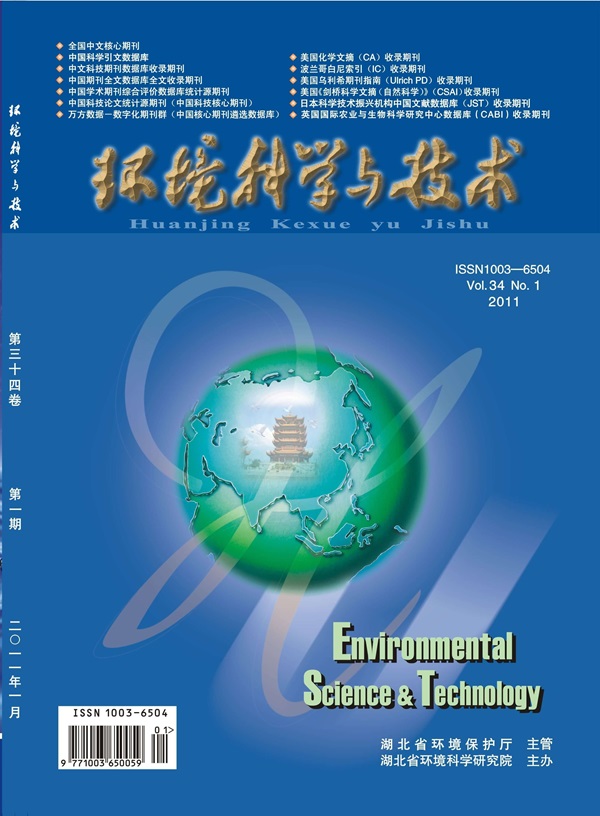河口沉积物中黄铁矿介导的典型抗生素降解:好氧和厌氧条件下硫种的作用。
IF 10.8
1区 环境科学与生态学
Q1 ENGINEERING, ENVIRONMENTAL
引用次数: 0
摘要
河口沉积物的氧化还原动力学对抗生素的环境命运有重要影响,但氧波动条件下的机制途径尚未得到充分阐明。本研究阐明了黄铁矿在介导三种模式抗生素(磺胺甲恶唑、SMX;诺氟沙星、;和氯四环素(CTC)在好氧和厌氧条件下。系统的批量实验结合活性氧分析揭示了黄铁矿在好氧条件下通过•OH氧化降解和厌氧条件下通过还原转化的双重功能机制。值得注意的是,硫铁矿中的硫种是关键的电子给体,在没有分子氧的情况下驱动NOR和CTC的脱氟和脱氯反应。x射线吸收精细结构和密度泛函理论模拟进一步证明了s -Fe-抗生素电子转移途径,其中硫化物通过Fe(II)配位位点提供电子。利用天然河口沉积物进行的现场验证证实了实验室的发现,强调了黄铁矿介导的还原途径对抗生素衰减的重大贡献。这些发现促进了对河口环境中黄铁矿驱动的氧化还原过程的机制认识,并强调了硫物种在介导非自由基抗生素降解中被忽视的作用,这对富硫沿海系统的自然衰减和修复策略具有重要意义。本文章由计算机程序翻译,如有差异,请以英文原文为准。
Pyrite-Mediated Typical Antibiotics Degradation in Estuarine Sediments: The Role of Sulfur Species under Aerobic and Anaerobic Conditions.
The redox dynamics of estuarine sediments critically influence the environmental fate of antibiotics, yet the mechanistic pathways under oxygen-fluctuating conditions have been insufficiently elucidated. This study elucidates the dual-function role of pyrite in mediating the oxidative and reductive degradation of three model antibiotics (sulfamethoxazole, SMX; norfloxacin, NOR; and chlortetracycline, CTC) under aerobic and anaerobic conditions. Systematic batch experiments coupled with reactive oxygen species analysis reveal a dual-function mechanism for pyrite involving oxidative degradation via •OH under aerobic conditions and reductive transformation under anaerobic conditions. Notably, sulfur species in pyrite serve as key electron donors, driving the defluorination and dechlorination reactions of NOR and CTC in the absence of molecular oxygen. X-ray absorption fine structure along with density functional theory simulations further demonstrate an S-Fe-antibiotic electron transfer pathway, wherein sulfide donates electrons via Fe(II) coordination sites. Field validation using natural estuary sediments corroborates the laboratory findings, highlighting the substantial contribution of pyrite-mediated reductive pathways to antibiotic attenuation. These findings advance the mechanistic insight into pyrite-driven redox processes in estuarine environments and underscore the overlooked role of sulfur species in mediating nonradical antibiotic degradation, with implications for natural attenuation and remediation strategies in sulfur-rich coastal systems.
求助全文
通过发布文献求助,成功后即可免费获取论文全文。
去求助
来源期刊

环境科学与技术
环境科学-工程:环境
CiteScore
17.50
自引率
9.60%
发文量
12359
审稿时长
2.8 months
期刊介绍:
Environmental Science & Technology (ES&T) is a co-sponsored academic and technical magazine by the Hubei Provincial Environmental Protection Bureau and the Hubei Provincial Academy of Environmental Sciences.
Environmental Science & Technology (ES&T) holds the status of Chinese core journals, scientific papers source journals of China, Chinese Science Citation Database source journals, and Chinese Academic Journal Comprehensive Evaluation Database source journals. This publication focuses on the academic field of environmental protection, featuring articles related to environmental protection and technical advancements.
 求助内容:
求助内容: 应助结果提醒方式:
应助结果提醒方式:


